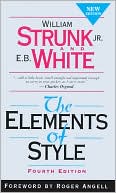Category Books
- Fiction Books & Literature
- Graphic Novels
- Horror
- Mystery & Crime
- Poetry
- Romance Books
- Science Fiction & Fantasy
- Thrillers
- Westerns
- Ages 0-2
- Ages 3-5
- Ages 6-8
- Ages 9-12
- Teens
- Children's Books
- African Americans
- Antiques & Collectibles
- Art, Architecture & Photography
- Bibles & Bible Studies
- Biography
- Business Books
- Christianity
- Computer Books & Technology Books
- Cookbooks, Food & Wine
- Crafts & Hobbies Books
- Education & Teaching
- Engineering
- Entertainment
- Foreign Languages
- Game Books
- Gay & Lesbian
- Health Books, Diet & Fitness Books
- History
- Home & Garden
- Humor Books
- Judaism & Judaica
- Law
- Medical Books
- New Age & Spirituality
- Nonfiction
- Parenting & Family
- Pets
- Philosophy
- Political Books & Current Events Books
- Psychology & Psychotherapy
- Reference
- Religion Books
- Science & Nature
- Self Improvement
- Sex & Relationships
- Social Sciences
- Sports & Adventure
- Study Guides & Test Prep
- Travel
- True Crime
- Weddings
- Women's Studies
The Elements of Style » (4th Edition)

Authors: William Strunk, E. B. White, E. B. White, Charles Osgood (Afterword), Roger Angell
ISBN-13: 9780881030686, ISBN-10: 0881030686
Format: Other Format
Publisher: San Val, Inc.
Date Published: July 1999
Edition: 4th Edition
Author Biography: William Strunk
William Strunk, Jr. first used his own book, The Elements of Style, in 1919 for his English 8 course at Cornell University. The book was published in 1935 by Oliver Strunk.
E. B. White was a student in Professor Strunk's class at Cornell, and used "the little book" for himself. Commissioned by Macmillan to revise Strunk's book, White edited the 1959 and 1972 editions of The Elements of Style.
Book Synopsis
You know the authors' names. You recognize the title. You've probably used this book yourself. This is The Elements of Style, the classic style manual, now in a fourth edition. A new Foreword by Roger Angell reminds readers that the advice of Strunk & White is as valuable today as when it was first offered.This book's unique tone, wit and charm have conveyed the principles of English style to millions of readers. Use the fourth edition of "the little book" to make a big impact with writing.
Boston Globe
No book in shorter space, with fewer words, will help any writer more than this persistent little volume.
Table of Contents
FOREWORD.
INTRODUCTION.
I.ELEMENTARY RULES OF USAGE.
1.Form the Possessive Singular of Nouns by Adding 's.
2.In a Series of Three or More Terms with a Single Conjunction, Use a Comma after Each Term except the Last.
3.Enclose Parenthetic Expressions between Commas.
4.Place a Comma before a Conjunction Introducing an Independent Clause.
5.Do Not Join Independent Clauses with a Comma.
6.Do Not Break Sentences in Two.
7.Use a Colon after an Independent Clause to Introduce a List of Particulars, an Appositive, an Amplification, or an Illustrative Question.
8.Use a Dash to Set Off an Abrupt Break or Interruption and to Announce a Long Appositive or Summary.
9.The Number of the Subject Determines the Number of the Verb.
10.Use the Proper Case of Pronoun.
11.A Participial Phrase at the Beginning of the Sentence Must Refer to the Grammatical Subject.
II.ELEMENTARY PRINCIPLES OF COMPOSITION.
12.Choose a Suitable Sesign and Hold to It.
13.Make the Paragraph the unit of Composition.
14.Use the Active Voice.
15.Put Statements in Positive Form.
16.Use Definite, Specific, Concrete Language.
17.Omit Needless Words.
18.Avoid a Succession of Loose Sentences.
19.Express Coordinate Ideas in Similar Form.
20.Keep Related Words Together.
21.In Summaries, Keep to One Tense.
22.Place the Emphatic Words of a Sentence at the End.
III.A FEW MATTERS OF FORM.
IV.WORDS AND EXPRESSIONS COMMONLY MISUSED.
V.AN APPROACH TO STYLE (WITH A LIST OF REMINDERS).
1.Place Yourself in the Background.
2.Write in a Way That Comes Naturally.
3.Work From a Suitable Style.
4.Write with Nouns and Verbs.
5.Revise and Rewrite.
6.Do Not Overwrite.
7.Do Not Overstate.
8.Avoid the Use of Qualifiers.
9.Do Not Affect a Breezy Manner.
10.Use Orthodox Spelling.
11.Do Not Explain Too Much.
12.Do Not Construct Awkward Adverbs.
13.Make Sure the Reader Knows Who is Speaking.
14.Avoid Fancy Words.
15.Do Not Use Dialect Unless Your Ear Is Good.
16.Be Clear.
17.Do Not Inject Opinion.
18.Use Figures of Speech Sparingly.
19.Do Not Take Shortcuts at the Cost of Clarity.
20.Avoid Foreign Languages.
21.Prefer the Standard to the Offbeat.
Afterword.
Glossary.
Subjects
 English-language Reference
English-language Reference  English Grammar
English GrammarReference
 Writing
Writing  Editing & Proofreading
Editing & ProofreadingReference
 Writing
Writing  Writing - General & Miscellaneous
Writing - General & MiscellaneousNonfiction
 Reference
Reference  English-language Reference
English-language ReferenceNonfiction
 Reference
Reference  Writing
Writing
